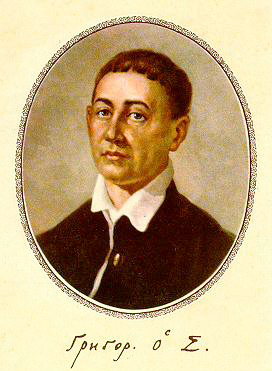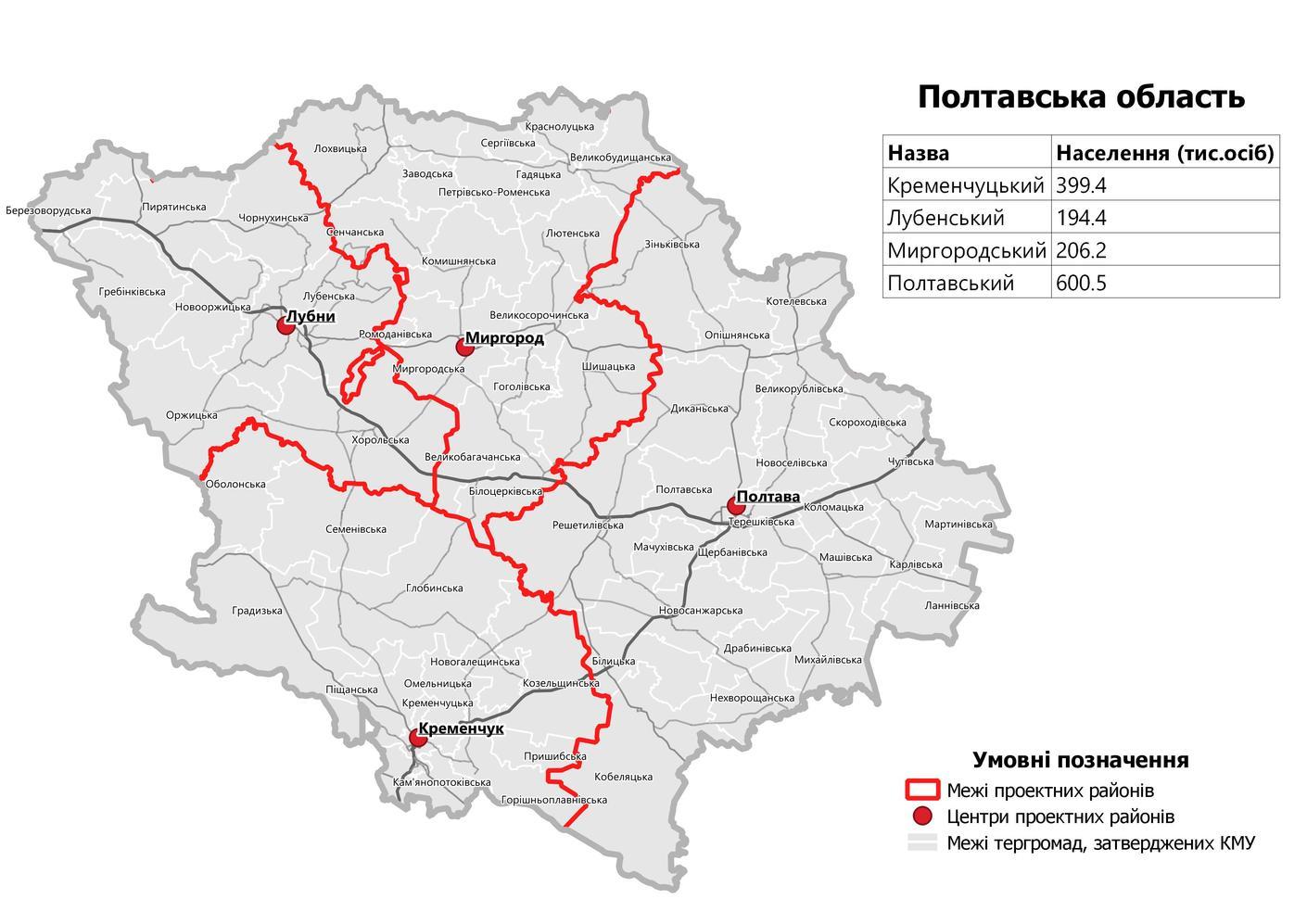|
Chornukhy
Chornukhy (, russian: Чернýхи) is an urban-type settlement and the administrative center of Lubny Raion, Poltava Oblast of central Ukraine. Chornukhy is known as the birthplace of philosopher Gregory Skovoroda; a monument testifies to this. The nearest railway station is Pyriatyn located away. Chornukhy is located on the river Mnoha. The territory of the settlement covers an area of 690 hectares. Village bus and a bus connection from Poltava, Kyiv, Lubny, Pyriatyn and Lokhvytsia. The total population of Chornukhy according to the Census on 1 January 2002 was 3138 inhabitants (2900 in 1984). Current population: History The year the town was founded is unknown. Chornukhy is first mentioned in 1261. It has been assumed that Chornukhy was initially a fortress built to protect against the Pechenegs and the Cumans and was established at the time of the Kievan Rus' state, but at the end of the 13th century it was destroyed by Mongol-Tatars. The next mention of the town appea ... [...More Info...] [...Related Items...] OR: [Wikipedia] [Google] [Baidu] |
Gregory Skovoroda
Hryhorii Skovoroda, also Gregory Skovoroda or Grigory Skovoroda ( la, Gregorius Scovoroda; uk, Григорій Савич Сковорода, ''Hryhorii Savych Skovoroda''; russian: Григо́рий Са́ввич Сковорода́, ''Grigory Savvich Skovoroda''; 3 December 1722 – 9 November 1794) was a philosopher of Ukrainian Cossack origin who lived and worked in the Russian Empire. He was a poet, a teacher and a composer of liturgical music. His significant influence on his contemporaries and succeeding generations and his way of life were universally regarded as Socratic, and he was often called a "Socrates". Skovoroda's work contributed to the cultural heritage both of modern-day Ukraine and of Russia. Skovoroda wrote his texts in a mixture of three languages: Church Slavic, Ukrainian, and Russian, with a large number of Western-Europeanisms, and quotations in Latin and Greek. Most of his surviving letters were written in Latin or Greek, but a small fr ... [...More Info...] [...Related Items...] OR: [Wikipedia] [Google] [Baidu] |
Poltava Oblast
Poltava Oblast ( uk, Полта́вська о́бласть, translit=Poltavska oblast; also referred to as Poltavshchyna – uk, Полта́вщина, literally 'Poltava Country') is an oblast (province) of central Ukraine. The administrative center of the oblast is the city of Poltava. Most of its territory is part of the historic Cossack Hetmanate (its southern regions: Poltava, Myrhorod, Lubny, and Hadiach). Population: Two other important cities there are Horishni Plavni and Kremenchuk. History During the 2022 Russian Invasion of Ukraine, the town of Myrhorod was bombed. However as of April 2022, there has been no ground fighting and the province remains completely under Ukrainian control. Geography Poltava Oblast is situated in the central part of Ukraine. Located on the left bank of Dnieper, Poltava region was part of the Cossack Hetmanate. It has an area of 28,800 km2. The oblast borders upon Chernihiv, Sumy, Kharkiv, Dnipropetrovsk, Kirovohrad, Cherkasy and K ... [...More Info...] [...Related Items...] OR: [Wikipedia] [Google] [Baidu] |
Urban Type Settlement
Urban-type settlementrussian: посёлок городско́го ти́па, translit=posyolok gorodskogo tipa, abbreviated: russian: п.г.т., translit=p.g.t.; ua, селище міського типу, translit=selyshche mis'koho typu, abbreviated: uk, с.м.т., translit=s.m.t.; be, пасёлак гарадскога тыпу, translit=pasiolak haradskoha typu; pl, osiedle typu miejskiego; bg, селище от градски тип, translit=selishte ot gradski tip; ro, așezare de tip orășenesc. is an official designation for a semi-urban settlement (previously called a "town"), used in several Eastern European countries. The term was historically used in Bulgaria, Poland, and the Soviet Union, and remains in use today in 10 of the post-Soviet states. The designation was used in all 15 member republics of the Soviet Union from 1922, when it replaced a number of terms that could have been translated by the English term "town" (Russia – ''posad'', Ukraine & ... [...More Info...] [...Related Items...] OR: [Wikipedia] [Google] [Baidu] |
Kyiv
Kyiv, also spelled Kiev, is the capital and most populous city of Ukraine. It is in north-central Ukraine along the Dnieper, Dnieper River. As of 1 January 2021, its population was 2,962,180, making Kyiv the List of European cities by population within city limits, seventh-most populous city in Europe. Kyiv is an important industrial, scientific, educational, and cultural center in Eastern Europe. It is home to many High tech, high-tech industries, higher education institutions, and historical landmarks. The city has an extensive system of Transport in Kyiv, public transport and infrastructure, including the Kyiv Metro. The city's name is said to derive from the name of Kyi, one of its four legendary founders. During History of Kyiv, its history, Kyiv, one of the oldest cities in Eastern Europe, passed through several stages of prominence and obscurity. The city probably existed as a commercial center as early as the 5th century. A Slavs, Slavic settlement on the great trade ... [...More Info...] [...Related Items...] OR: [Wikipedia] [Google] [Baidu] |
Yad Vashem
Yad Vashem ( he, יָד וַשֵׁם; literally, "a memorial and a name") is Israel's official memorial to the victims of the Holocaust. It is dedicated to preserving the memory of the Jews who were murdered; honoring Jews who fought against their Nazi oppressors and Gentiles who selflessly aided Jews in need; and researching the phenomenon of the Holocaust in particular and genocide in general, with the aim of avoiding such events in the future. Established in 1953, Yad Vashem is located on the western slope of Mount Herzl, also known as the Mount of Remembrance, a height in western Jerusalem, above sea level and adjacent to the Jerusalem Forest. The memorial consists of a complex containing two types of facilities: some dedicated to the scientific study of the Holocaust and genocide in general, and memorials and museums catering to the needs of the larger public. Among the former there are a research institute with archives, a library, a publishing house, and an educational ... [...More Info...] [...Related Items...] OR: [Wikipedia] [Google] [Baidu] |
World War II
World War II or the Second World War, often abbreviated as WWII or WW2, was a world war that lasted from 1939 to 1945. It involved the vast majority of the world's countries—including all of the great powers—forming two opposing military alliances: the Allies and the Axis powers. World War II was a total war that directly involved more than 100 million personnel from more than 30 countries. The major participants in the war threw their entire economic, industrial, and scientific capabilities behind the war effort, blurring the distinction between civilian and military resources. Aircraft played a major role in the conflict, enabling the strategic bombing of population centres and deploying the only two nuclear weapons ever used in war. World War II was by far the deadliest conflict in human history; it resulted in 70 to 85 million fatalities, mostly among civilians. Tens of millions died due to genocides (including the Holocaust), starvation, ma ... [...More Info...] [...Related Items...] OR: [Wikipedia] [Google] [Baidu] |
Kievan Rus'
Kievan Rusʹ, also known as Kyivan Rusʹ ( orv, , Rusĭ, or , , ; Old Norse: ''Garðaríki''), was a state in Eastern and Northern Europe from the late 9th to the mid-13th century.John Channon & Robert Hudson, ''Penguin Historical Atlas of Russia'' (Penguin, 1995), p.14–16.Kievan Rus Encyclopædia Britannica Online. Encompassing a variety of polities and peoples, including East Slavic, Norse, and Finnic, it was ruled by the , fou ... [...More Info...] [...Related Items...] OR: [Wikipedia] [Google] [Baidu] |
Cumans
The Cumans (or Kumans), also known as Polovtsians or Polovtsy (plural only, from the Russian language, Russian Exonym and endonym, exonym ), were a Turkic people, Turkic nomadic people comprising the western branch of the Cuman–Kipchak confederation. After the Mongol invasion of Rus', Mongol invasion (1237), many sought Right of asylum, asylum in the Kingdom of Hungary, as many Cumans had settled in Hungary, the Second Bulgarian Empire playing an important role in the development of the state. Cumans played also an important role in (The Byzantine Empire, the Latin Empire, and the Empire of Nicaea, Nicaea Empire) Anatolia . Related to the Pecheneg, they inhabited a shifting area north of the Black Sea and along the Volga River known as Cumania, from which the Cuman–Kipchaks meddled in the politics of the Caucasus and the Khwarazmian Empire. The Cumans were fierce and formidable nomadic warriors of the Eurasian Steppe who exerted an enduring influence on the medieval Balkans. ... [...More Info...] [...Related Items...] OR: [Wikipedia] [Google] [Baidu] |
Pechenegs
The Pechenegs () or Patzinaks tr, Peçenek(ler), Middle Turkic: , ro, Pecenegi, russian: Печенег(и), uk, Печеніг(и), hu, Besenyő(k), gr, Πατζινάκοι, Πετσενέγοι, Πατζινακίται, ka, პაჭანიკი, bg, печенеги, pechenegi, bg, печенези, ; sh-Latn-Cyrl, Pečenezi, separator=/, Печенези, la, Pacinacae, Bisseni were a semi-nomadic Turkic ethnic people from Central Asia who spoke the Pecheneg language which belonged to the Oghuz branch of the Turkic language family. Ethnonym The Pechenegs were mentioned as ''Bjnak'', ''Bjanak'' or ''Bajanak'' in medieval Arabic and Persian texts, as ''Be-ča-nag'' in Classical Tibetan documents, and as ''Pačanak-i'' in works written in Georgian. Anna Komnene and other Byzantine authors referred to them as ''Patzinakoi'' or ''Patzinakitai''. In medieval Latin texts, the Pechenegs were referred to as ''Pizenaci'', ''Bisseni'' or ''Bessi''. East Slavic peo ... [...More Info...] [...Related Items...] OR: [Wikipedia] [Google] [Baidu] |
Lokhvytsia
Lokhvytsia ( uk, Ло́хвиця, , ; russian: Ло́хвица, ) is a city in Poltava Oblast (province) of central Ukraine. It is the administrative center of Lokhvytsia Raion (district), and is located on the banks of the Lokhvytsia River. Population: History The name of the river Lokhvytsia, as well as the town, comes from the Old Slavonic word ''lokhve'' which means "salmon". At the time of Kievan Rus' the territory where the town is located was part of Pereyaslav Principality. The precise date of the foundation is unknown. From written records, it can be determined that Lokhvytsia existed prior to 1320. In 1644, Magdeburg rights were granted to the town so that all town issues were to be resolved by a city council, elected by the wealthy citizens. In 1648–1658, Lokhvytsia was a Sotnia town of the Myrhorod Cossack Regiment, later (1658-І781 р.р.) of the Lubny Cossack Regiment. During World War II, Lokhvytsia was occupied by the German Army from September 12, ... [...More Info...] [...Related Items...] OR: [Wikipedia] [Google] [Baidu] |


.jpg)



